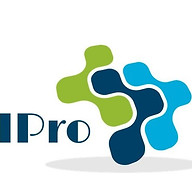For those like me who only have a rudimentary understanding on the industry supply chain, this was an interesting read.
Gives some perspective to the path to get to an end user.
Snip below and full read here...
Figure 1: General Overview of the Semiconductor Supply Chain Being one of the most complex supply chains in the world, the semiconductor supply chain is worth around $0.5 trillion and is often very difficult to understand and manipulate. But before we dive deeper, we need to know what a supply...

anysilicon.com
Main Links of the Semiconductor Supply Chain
Coming back to the semiconductor supply chain, it is extremely large and changes a lot over time as newer technologies are researched and older materials or techniques are exchanged for better ones.
For context, the production of a single computer chip can require more than 1000 steps and close to 70 international border exchanges before it reaches the end customer.
Figure 2 – Semiconductor Supply Chain
First of all, there are three main sectors to the semiconductor supply chain: research and development, manufacturing, and end use. There is a new sector coming more and more into the picture, recycling, which is expected and needs to become an integral part of future semiconductor production plants if we are to meet the global green future standards.
The first sector, research and development (R&D), is the powerhouse behind the entirety of the semiconductor supply chain, as new research ideas and technologies directly impact all the other involved sectors. R&D includes both pre-competitive, exploratory studies and research on the fundamental technologies, and competitive research, which is more aimed at advancing the leading edge that the company has in the semiconductor industry.
Secondly, production or manufacturing consists of five major steps: design, fabrication, assembly, testing and packaging, with the last three usually being coupled together under the acronym ATP and often done by an
OSAT company.
Companies have two possible routes that they can take: do everything in-house, i.e. being vertically integrated, in which case they become IDMs (Integrated Device Manufacturers) and sell the chip themselves; or design a certain IC and then outsource the rest, fabrication to foundries and ATP to OSAT (Outsourced Semiconductor Assembly and Testing) vendors, making them a fabless firm. For example, Intel is an IDM and AMD (their direct competition) is a fabless company, as they design products, but do not have the capabilities or facilities to manufacture them.
Regarding the inputs, the production of semiconductors has the raw materials, Semiconductor Manufacturing Equipment (SME for short), Electronic Design Automation (EDA) and the core Intellectual Property (IP).
Figure 3 – Detailed Semiconductor Supply Chain
As for end user, this involves distributing the ICs to other companies or retail customers for integration within a product (like smartphone, laptop, automobile, server, appliance etc.).



